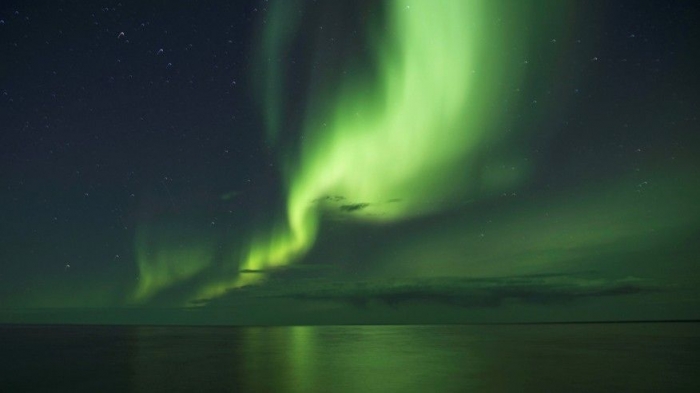Auroras, also known as the northern or southern lights (northern lights occur in the Arctic Circle while southern lights occur in the Antarctic Circle), occur when particles from the sun interact with Earth's magnetic field. [ Aurora Photos: See Breathtaking Views of the Northern Lights ]
According to NASA scientists, the solar particles can cause electrical current changes in the magnetic field, sending energetic particles into the upper atmosphere. When these particles interact with the gases in the upper atmosphere, those gases become charged. When this gained energy is released, the aurora glows. That is, as the gases give up the energy, they release photons (light particles) of specific wavelengths, creating the rich blue and greenish hues.
This wasn't Pesquet's first sighting of the northern lights from the ISS. The astronaut first caught an auroral display on Jan. 18, 2017, and snapped a photo of the light show, reported Space.com.
"It is literally a visual representation of the Earth's magnetic field protecting all living beings from space radiation," Pesquet wrote of the aurora on Flickr.
Along with taking his stunning photography, Pesquet has performed about 50 scientific experiments aboard the ISS, according to the European Space Agency. Pesquet's mission "Proxima" — named for the sun's closest star and continuing a tradition of naming French astronauts' missions after stars or constellations — ended this week. Pesquet and Russian cosmonaut Oleg Novitskiy returned to Earth today (June 2).
A three-person crew made up of cosmonaut Fyodor Yurchikhin and NASA astronauts Peggy Whitson and Jack Fischer will operate the station until the arrival of three new crewmembers later this summer, according to NASA.
More about: #NorthernLights
















































